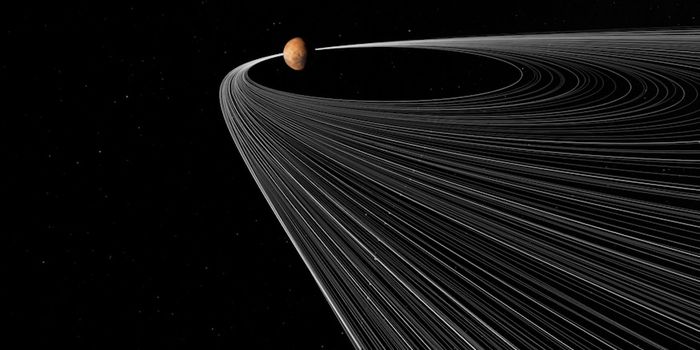The Grand Canyon of Mars, Valles Marineris | Solar System Wonders
Credit: NASA/USGS
Labroots has rich history of examining Mars in great detail, including its suite of awesome geologic formations, stunning orbiter images, two moons, geologic and observational history, and potential for past life, just to name a few. Here, we will be examining one of the most recognizable locations on Mars, which also happens to be the largest off-Earth canyon in the Solar System, Valles Marineris, which is second only to the rift valleys of the mid-ocean ridge system on Earth.
The colossal canyon known as Valles Marineris is so big that it stretches almost one-fourth of the entire Red Planet’s circumference, or equivalent to just over the entire coast-to-coast distance of the United States. With a total length of approximately 2500 mi (4000 km) and a depth of up to 4 mi (7 km), Valles Marineris more than eclipses the Grand Canyon in both categories, with the latter standing at 277 mi (445 km) and 1.1 mi (1.8 km), respectively.
While Mars has been observed with telescopes for hundreds of years, Valles Marineris went unobserved until it got its first close-up by NASA’s Mariner 9 spacecraft in 1972. Most scientists refer to Valles Marineris as a large tectonic “crack” that was formed during the Red Planet’s cooling phase, which resulted in the rising crust in Mars’ Tharsis region west of what is now Valles Marineris, and also causing the crust to widen due to erosional forces.
Valles Marineris is largely comprised of a series of steep depressions known as chasmata, a multitude of channels that lead directly into the canyon, likely from rushing water billions of years ago. There is also evidence of volcanic ash and eroded material within the canyon, as well.
Valles Marineris has been examined in intricate detail by a variety of Mars orbiters over the decades, and continues to amaze both scientists and astronomy lovers alike. What new insights will we learn about Mars’ Grand Canyon? Only time will tell, and this is why we science!
Sources: Labroots, Labroots (1), Labroots (2), Labroots (3), Labroots (4), Labroots (5), NASA, Arizona State University, Space.com
As always, keep doing science & keep looking up!









